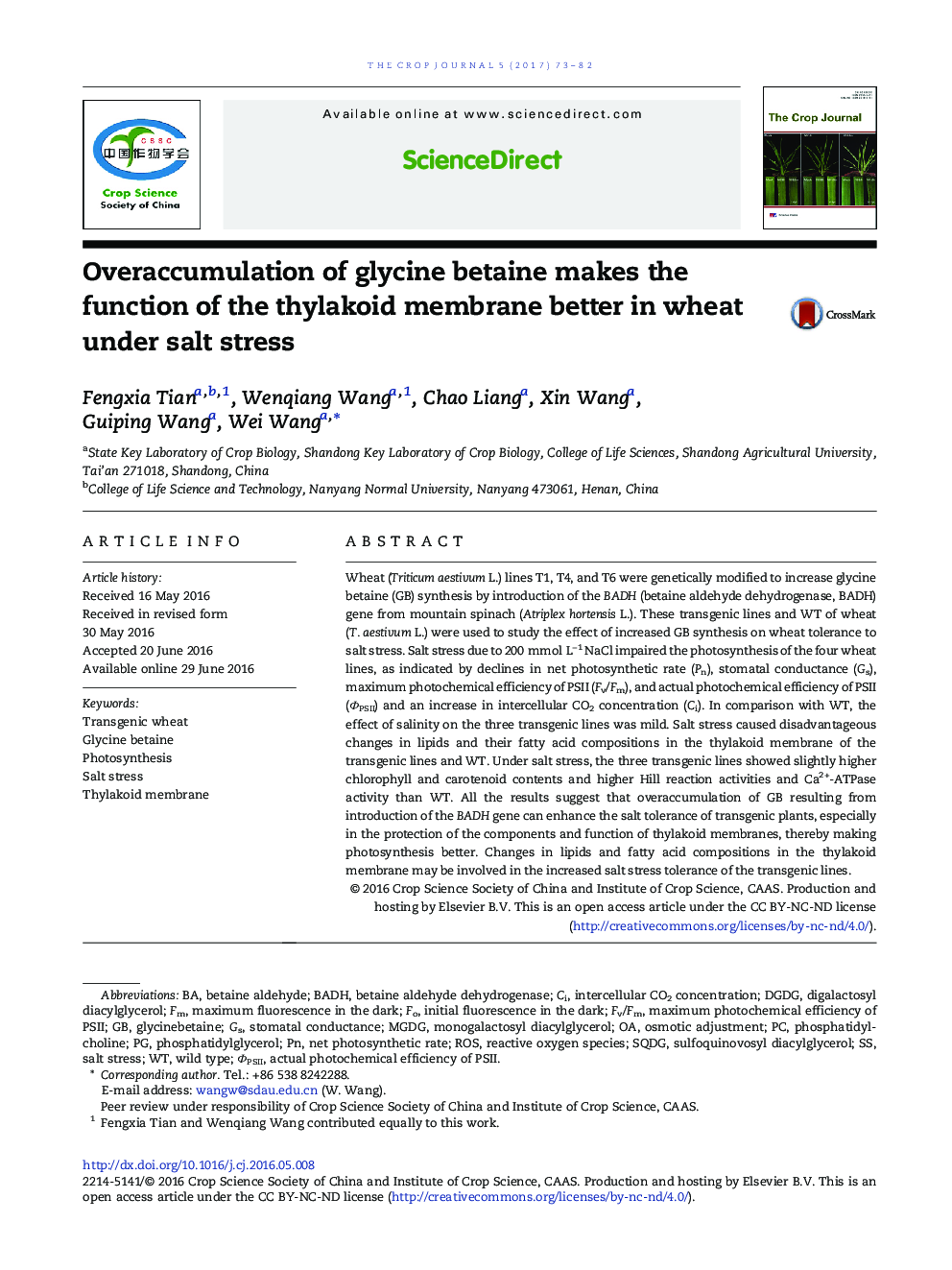| Article ID | Journal | Published Year | Pages | File Type |
|---|---|---|---|---|
| 5520847 | The Crop Journal | 2017 | 10 Pages |
Wheat (Triticum aestivum L.) lines T1, T4, and T6 were genetically modified to increase glycine betaine (GB) synthesis by introduction of the BADH (betaine aldehyde dehydrogenase, BADH) gene from mountain spinach (Atriplex hortensis L.). These transgenic lines and WT of wheat (T. aestivum L.) were used to study the effect of increased GB synthesis on wheat tolerance to salt stress. Salt stress due to 200 mmol Lâ 1 NaCl impaired the photosynthesis of the four wheat lines, as indicated by declines in net photosynthetic rate (Pn), stomatal conductance (Gs), maximum photochemical efficiency of PSII (Fv/Fm), and actual photochemical efficiency of PSII (ФPSII) and an increase in intercellular CO2 concentration (Ci). In comparison with WT, the effect of salinity on the three transgenic lines was mild. Salt stress caused disadvantageous changes in lipids and their fatty acid compositions in the thylakoid membrane of the transgenic lines and WT. Under salt stress, the three transgenic lines showed slightly higher chlorophyll and carotenoid contents and higher Hill reaction activities and Ca2 +-ATPase activity than WT. All the results suggest that overaccumulation of GB resulting from introduction of the BADH gene can enhance the salt tolerance of transgenic plants, especially in the protection of the components and function of thylakoid membranes, thereby making photosynthesis better. Changes in lipids and fatty acid compositions in the thylakoid membrane may be involved in the increased salt stress tolerance of the transgenic lines.
